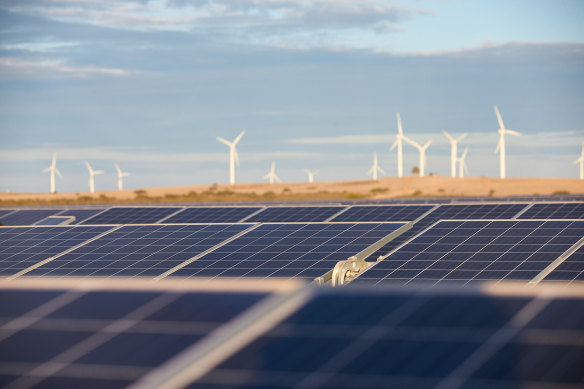
The burden of higher prices unfortunately underpins Australia’s transition to renewable power. Energy companies will push to recover the costs of moving from black (coal) to green, and while some of this cost may be compensated by government subsidy schemes, consumers will pay either through higher bills or their taxes.
Alinta Energy boss Jeff Dimery flagged this potential scenario last month when he warned that Australia’s worthy commitment to phase out coal will be an expensive affair.

The federal government wants to be 82 per cent reliant on renewable energy by 2030.
The federal government has set ambitious targets to remove coal, which accounts for 60 per cent of the power we consume, from the energy grid. Within six years, the government wants 82 per cent of Australia’s power to come from sources such as wind, solar and hydro, up from the current 32 per cent, which requires a tripling of clean energy generation by 2030.
So, while renewables are cheaper than coal, the transition isn’t. And when it comes to that cost, Dimery said it’s time to get real.

Alinta Energy managing director Jeff Dimery.Credit: Alex Ellinghausen
Canadian investor Brookfield’s failed joint venture bids for Origin and AGL over the past two years outlined the tens of billions of dollars that each of these targets would need to fund the move from coal and gas to renewable generation and storage over the next decade. The Australian Energy Market Operator’s own figures suggest the transition will cost about $383 billion between now and 2050.
While the government has provided some relief to struggling families, any piecemeal relief will be a short-term fix to an issue that will play out over decades.
The imperative to reduce emissions and consign fossil fuels to history is well understood, but the next phase of this challenge will require an honest assessment of the enormous costs involved and just who will pay for it.
The Market Recap newsletter is a wrap of the day’s trading. Get it each weekday afternoon.









 Add Category
Add Category